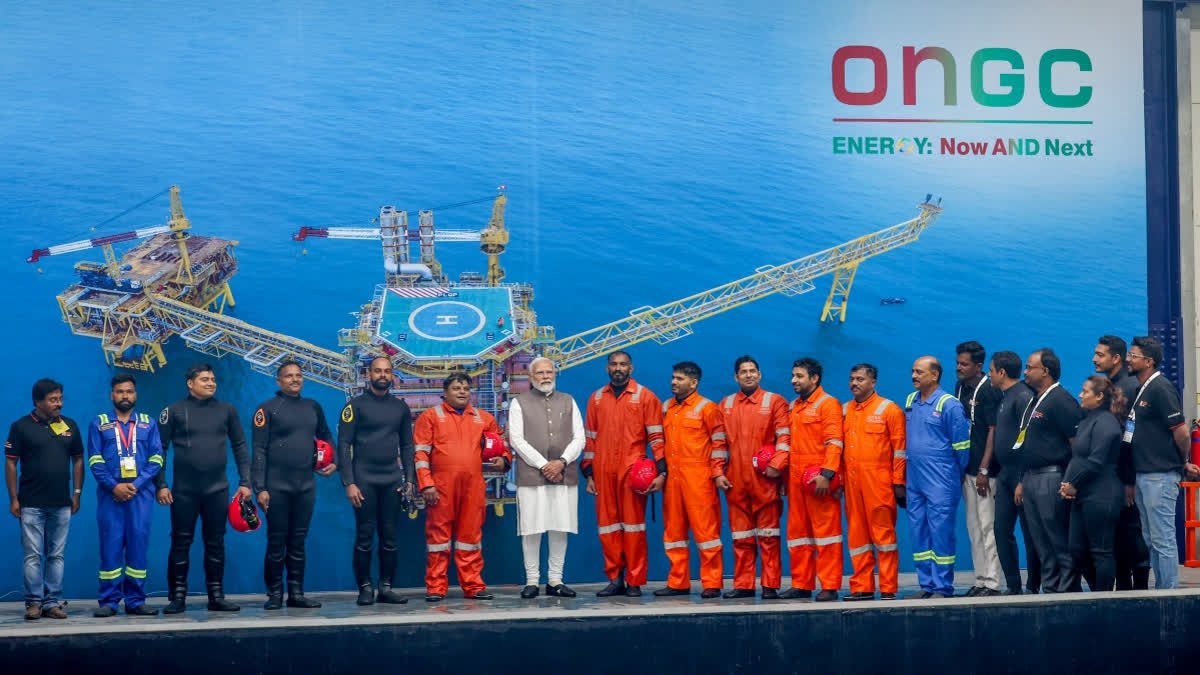New Delhi: State-owned Oil and Natural Gas Corporation (ONGC) will invest about Rs 2 lakh crore in setting up renewable energy sites and green hydrogen plants and cutting gas flaring to zero to achieve its 2038 net-zero carbon emission goal.
The company, which produces about two-thirds of India's crude oil and about 58 per cent of natural gas, on Tuesday released a 200-page document, detailing its path to achieving net zero emissions. It listed clean energy projects even as it looks to boost its hydrocarbon output to meet the country's energy needs.
ONGC will invest Rs 97,000 crore by 2030 in setting up 5 gigawatts of renewable energy capacity, green hydrogen, biogas, pump storage plant and offshore wind project, according to the document. Another Rs 65,500 crore will be invested by 2035, mostly in a green hydrogen or green ammonia plant, and the remaining Rs 38,000 crore by 2038, primarily in setting up 1 GW of offshore wind projects.
These projects will help the firm offset 9 million tonnes of carbon emissions it is directly (Scope-1 emissions) or indirectly (Scope-2 emissions) responsible for. ONGC said it will invest Rs 5,000 crore to cut gas flaring to zero by 2030 through technological intervention.
The firm released into the atmosphere 554 million cubic metres of methane in 2021-22 (base year), mostly because it was an incidental by-product of oil or the quantity was not economical enough to pipe it to consumers.
ONGC will spend Rs 30,000 crore in setting up 5 GW solar parks that will convert sunlight into electricity and turbines that will do the same with wind energy. It will add 1 GW of solar and onshore wind capacity by 2035 and 2038 at a cost of Rs 5,000 crore each.
It will invest Rs 40,000 crore by 2030 and a similar amount by 2035 to set up two 1,80,000 tonnes per annum green hydrogen and/or 1 million tonnes of green ammonia projects.
ONGC, which has installations in the Arabian Sea and Bay of Bengal to produce oil and gas from below the seabed, is also looking at installing offshore wind turbines to generate 0.5 GW of electricity by 2030 and double it by 2035. The first 0.5 GW offshore wind project is likely to cost Rs 12,500 crore and the next about Rs 12,000 crore.
By 2038, it will add another 1 GW of offshore wind energy capacity at an investment of Rs 25,000 crore, the document said. The company is also looking at investing Rs 20,000 crore for setting up 3 GW of pump storage plants to meet electricity requirements when renewable sources like sunlight and wind energy are not available.
The remaining investment will be in biogas, carbon capture and other clean energy projects. All this while it continues to hunt and produce more oil and gas. Crude oil, which companies like ONGC pump out from below the seabed and from underground reservoirs, is a primary source of energy. It is processed in oil refineries to produce petrol, diesel and jet fuel. With the world looking to transition away from fossil fuels, companies around the globe are looking at new avenues to use crude oil.
Gas produced in a similar fashion is used to generate electricity, produce fertiliser or convert into CNG to power automobiles or into PNG to fire kitchen stoves. Scope 1 emissions are from directly emitting sources that are owned or controlled by a company. Scope 2 emissions are from the consumption of purchased electricity, steam, or other sources of energy generated upstream from a company's direct operations.
ONGC produced 21.14 million tonnes of oil in 2023-24 (April 2023 to March 2024) and 20.648 billion cubic metres (bcm) of gas.



